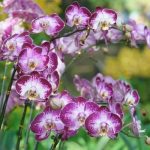Are you struggling to come up with garden design ideas for small front gardens? Maximizing the potential of limited space while creating a beautiful and functional outdoor area can be a challenge, but it’s definitely possible with the right approach.
In this article, we’ll explore creative ways to design small front gardens that make the most of their size, focusing on tips for assessing the space, utilizing vertical elements, choosing the right plants, creating visual interest, functional design, lighting and accessories, and real-life case studies.
Designing a small front garden may seem daunting at first, but it offers unique opportunities for creativity and innovation. By understanding the challenges and potential of small spaces, you can create a stunning outdoor area that enhances your home’s curb appeal and provides an inviting space for relaxation and enjoyment. From maximizing vertical space to selecting low-maintenance plants, there are numerous techniques and strategies to consider when designing a small front garden.
In this article, we’ll delve into various aspects of garden design for small front gardens, providing practical tips and recommendations to help you transform your limited outdoor space into a beautiful and functional oasis. Whether you’re looking to add color and texture or incorporate practical elements like seating and pathways, there are plenty of inspiring ideas to explore.
Join us as we discover how to make the most of small front gardens through thoughtful design and clever landscaping techniques.
Assessing the Space
When it comes to small front gardens, every inch of space counts. The key to maximizing the potential of a small front garden lies in careful assessment and strategic planning. One effective way to make the most of limited space is by creating different levels within the garden. This can be achieved through the use of raised beds, tiered planters, or even adding steps to create visual interest and the illusion of more space.
Another important tip for assessing the space in a small front garden is to consider the layout and flow of the area. By dividing the space into separate zones for planting, seating, and pathways, you can create a sense of order and organization, making the garden feel larger and more functional. Additionally, using compact furniture or built-in seating can help maximize space while still providing a comfortable outdoor area.
Incorporating mirrors into the design is also an effective way to visually expand a small front garden. Placing mirrors strategically on walls or fences can create the illusion of depth and reflect light throughout the space. When used thoughtfully, mirrors can significantly enhance the overall look and feel of a small front garden.
| Tips | Benefits |
|---|---|
| Create different levels | Visual interest and illusion of more space |
| Consider layout and flow | Creates order and organization; makes garden feel larger |
| Incorporate mirrors | Visually expands space and enhances aesthetic appeal |
By implementing these tips for assessing small front gardens, homeowners can transform their limited outdoor spaces into beautiful, functional retreats that make a big impact. With thoughtful planning and creativity, even the smallest front gardens can become inviting havens that showcase personal style while maximizing every inch of available space.
Utilizing Vertical Space
When it comes to designing a small front garden, utilizing vertical space can be a game-changer. Vertical elements not only maximize the use of limited space but also add visual interest and depth to the garden. There are several creative ways to effectively incorporate vertical elements into garden design, from trellises and arches to hanging planters and wall-mounted containers.
One popular technique for utilizing vertical space in small front gardens is the use of trellises and arbors. These structures not only provide support for climbing plants such as ivy, roses, or clematis but also create an enchanting and whimsical atmosphere. Additionally, trellises and arbors can serve as focal points in the garden, drawing the eye upward and making the space feel larger than it actually is.
Another innovative way to incorporate vertical elements is through the use of hanging planters or wall-mounted containers. Hanging baskets filled with cascading flowers or trailing vines can add a pop of color and greenery without taking up precious ground space. Likewise, wall-mounted containers allow for planting flowers, herbs, or even succulents on vertical surfaces such as fences or walls, adding texture and visual appeal to the small front garden.
In addition to these ideas for incorporating vertical elements into garden design, consider using tall, narrow planters or creating a living wall with a variety of plants to further maximize vertical space. With these innovative approaches, even the smallest front gardens can be transformed into vibrant and visually engaging outdoor spaces.
| Vertical Element | Benefits |
|---|---|
| Trellises & Arbors | Support climbing plants; create focal points in the garden |
| Hanging Planters & Wall-Mounted Containers | Add color and greenery without taking up ground space; add texture to vertical surfaces |
| Tall Narrow Planters & Living Walls | Further maximize vertical space; transform small front gardens into vibrant outdoor spaces |
Choosing the Right Plants
When it comes to designing a small front garden, choosing the right plants is crucial for maximizing the space and creating a visually appealing outdoor area. With limited room for greenery, it’s important to select low-maintenance, space-saving plants that will thrive in a compact environment. Here are some recommendations for selecting the perfect plants for your small front garden.
Compact Shrubs and Trees
When it comes to adding greenery to a small front garden, opting for compact shrubs and trees is an excellent choice. Look for varieties that stay relatively small and compact, such as dwarf evergreens, boxwoods, or columnar trees. These plants provide structure and texture to the garden without overwhelming the limited space available.
Vertical Planting
Incorporating vertical elements into your small front garden is a great way to maximize space and add visual interest. Consider using trellises, wall-mounted planters, or vertical gardens to grow climbing plants and vines. This not only adds greenery to the space but also creates a sense of height and depth in the garden design.
Perennial Ground Covers
For low-maintenance ground cover options, consider planting perennial varieties that are well-suited for small front gardens. Choose plants like creeping thyme, sedum, or moss roses that spread out across the ground, effectively filling in empty spaces with lush foliage and colorful blooms.
By carefully selecting the right plants for your small front garden, you can create a beautiful and functional outdoor space that makes the most of its limited size. Whether you opt for compact shrubs, vertical planting solutions, or perennial ground covers, these recommendations will help you achieve an attractive and well-balanced garden design in a smaller area.
Creating Visual Interest
When working with a small front garden, it’s important to create visual interest in order to make the most of the limited space. By incorporating color, texture, and depth, you can make your small front garden feel larger and more inviting. Here are some techniques for achieving visual interest in a small front garden.
Color
One of the simplest ways to add visual interest to a small front garden is by incorporating a variety of colors. Consider planting a mix of flowers, shrubs, and foliage in different hues to create a vibrant and dynamic look. You can also add color through accessories such as pots, planters, and outdoor accents. By strategically placing pops of color throughout the space, you can draw the eye and create a sense of depth.
Texture
Incorporating texture into your small front garden can add dimension and visual appeal. Use a combination of plants with varying leaf shapes and sizes to create contrast and interest. For example, mix fine-textured plants like ornamental grasses with coarser textures like succulents or ferns. Incorporating hardscape elements like stone or gravel pathways can also introduce texture into the design.
Depth
Creating depth in a small front garden is key to making it feel more spacious. Use layering techniques by placing taller plants at the back of the garden bed and gradually transitioning to shorter plants towards the front. Incorporating elements that draw the eye towards a focal point, such as an arbor or trellis covered in climbing vines, can also create a sense of depth in the space.
By implementing these techniques for adding color, texture, and depth into your small front garden design, you can enhance its visual appeal while making it feel more spacious and inviting. These simple yet effective strategies can transform even the tiniest front yard into an attractive and welcoming outdoor space that will leave a lasting impression on visitors.
Functional Design
When it comes to garden design ideas for small front gardens, incorporating functional elements is crucial for making the most of limited space. One key aspect of functional design in a small front garden is the inclusion of seating areas.
Even in a small space, there are creative ways to incorporate seating, such as built-in benches along the perimeter or a compact bistro set that can be easily tucked away when not in use. By adding seating, you can transform your front garden into a welcoming and inviting space for relaxation and socializing.
In addition to seating, pathways play a vital role in the functionality and aesthetics of a small front garden. Well-designed pathways can create visual interest and guide visitors through the space, while also providing practical access to different areas of the garden.
Consider using materials such as gravel, stepping stones, or brick pavers to create an attractive pathway that complements the overall design of your small front garden. Pay attention to the layout and flow of pathways to ensure they optimize the available space without feeling cramped or cluttered.
Furthermore, other practical elements such as storage solutions, water features, or even a small play area for children can add multi-functionality to your small front garden. With thoughtful planning and strategic placement, these elements can enhance not only the functionality but also the enjoyment of your outdoor space. When considering functional design for your small front garden, remember that every element should serve a purpose and contribute to maximizing the potential of your limited space.
Lighting and Accessories
Creating the right ambiance in a small front garden can greatly enhance its aesthetic appeal. Lighting and accessories play a key role in achieving this, as they add both functionality and visual interest to the space. When it comes to lighting, strategic placement of fixtures can create a warm and inviting atmosphere, making the garden usable even after sunset. Consider using solar-powered lights along pathways or LED spotlights to highlight features such as trees or architectural elements.
In addition to lighting, carefully selected accessories can also elevate the overall look of a small front garden. From decorative planters and sculptures to water features and seating options, accessories can bring personality and charm to the space. When working with a small area, it’s important to choose accessories that complement the scale of the garden without overwhelming it. For example, opt for smaller-scale statuary or minimalist seating that doesn’t take up too much space.
When selecting lighting and accessories for a small front garden, it’s essential to consider the overall design scheme and theme. For a modern garden, sleek and minimalist fixtures may be more suitable, while a traditional garden might benefit from ornate lanterns or classic statues. By carefully choosing lighting and accessories that align with the design style of the garden, homeowners can create a cohesive and visually appealing outdoor space.
Overall, when it comes to enhancing the ambiance and aesthetic appeal of small front gardens, thoughtful selection of lighting and accessories is key. By incorporating these elements into the design process, homeowners can create a welcoming and visually striking outdoor space that maximizes the potential of their small front gardens.
Case Studies
Front gardens, no matter how small, have the potential to be beautifully designed and functional spaces. Here are some real-life examples of successful garden design ideas for small front gardens to inspire you:
- Vertical Garden: In a limited space, vertical gardening can be a game-changer. One homeowner transformed their small front garden by installing a vertical garden on one of the walls. This not only added greenery but also saved precious ground space. They used wall-mounted planters and trellises to create an attractive and functional display.
- Container Garden: Another great example is a front garden that utilized container gardening to maximize the available space. By using different-sized pots and planters, they were able to create layers of greenery and flowers, adding depth and visual interest to the small area. The key was choosing plants that thrived in containers and complemented each other in terms of color and texture.
- Functional Design: One front garden stood out because of its clever use of functional elements. The homeowner incorporated a small seating area with a bench and table, as well as a winding pathway leading to the front door. These practical elements not only added charm but also made the most of the limited space by serving as both decorative and functional features in the garden.
These case studies demonstrate that with creativity and strategic planning, it’s possible to design stunning small front gardens that are both visually appealing and functional.
Conclusion
In conclusion, designing a small front garden requires a careful balance of creativity and practicality. Understanding the challenges and opportunities presented by limited space is crucial for creating a functional and visually appealing outdoor area. By assessing the space, utilizing vertical elements, choosing the right plants, creating visual interest, incorporating practical elements, and enhancing ambiance with lighting and accessories, homeowners can maximize the potential of their small front gardens.
When it comes to choosing plants for a small front garden, opt for low-maintenance varieties that won’t overwhelm the space. Consider incorporating vertical elements such as trellises or hanging planters to make the most of limited square footage. Adding seating areas or pathways can create a sense of purpose and functionality in a small garden. Additionally, don’t underestimate the impact of lighting and accessories in enhancing the overall ambiance and aesthetic appeal of your front garden.
By following these tips and considering real-life case studies of successful garden designs for small front gardens, homeowners can transform their outdoor spaces into inviting retreats that make a big impact despite their size. With careful planning and attention to detail, even the smallest front gardens can become beautiful and functional extensions of the home.
Whether you’re looking to create a cozy seating area or simply add some color and texture to your outdoor space, there are plenty of creative solutions that can elevate your small front garden into a welcoming oasis.
Frequently Asked Questions
How Do I Beautify My Small Front Yard?
To beautify a small front yard, consider adding colorful plants and flowers in containers or small raised beds to add visual interest. Use vertical elements like trellises or hanging baskets to maximize space and add charm.
How Do I Landscape My Small Front Yard?
When landscaping a small front yard, focus on creating a focal point, such as a well-placed tree or decorative fountain. Use small-scale furniture and decor to enhance the space without overwhelming it.
How Do You Structure a Small Garden?
Structuring a small garden involves careful planning of plant placement to maximize space and create visual appeal. Utilize tiered planting beds or strategically placed pathways to create depth and interest. Consider incorporating a variety of textures and colors for a dynamic look.

Welcome to my gardening blog! I am passionate about plants and enjoy sharing my knowledge and experiences with others. In this blog, I will write about everything related to gardening, from tips on how to get started to updates on my own garden projects.





